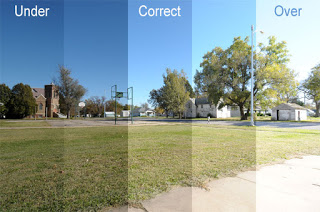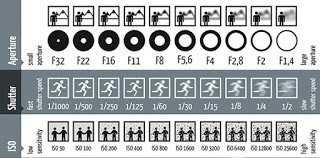Exposure
Exposure is the most basic element of photography. To take a good photograph you need a sufficient amount of light. The exact amount that is needed or used to record an image is known as Exposure.

The camera needs to control how much light reaches the film or imaging device. If there is too little light, the image will be dark. And if too much light then the image will appear washed out.
The camera controls the amount the image is exposed with the Aperture and the Shutter speed. By choosing the right combination of Aperture and Shutter speed you get the correct exposure for your image.

Shutter Speed : Slow shutter speeds allow more light into the camera sensor and are used for low-light and night photography, while fast shutter speeds help to freeze motion. Examples of shutter speeds: 1/25 (1/25th of a second) .
Aperture : The iris of the lens that controls the size (diameter) of the aperture is called diaphragm in optics. The sole purpose of the diaphragm is to block or stop all light, with the exception of the light that goes through the aperture. In photography, aperture is expressed in f-numbers (for example f/5.6). Simply put, aperture is a hole within a lens.
As a general rule, small aperture produce a large depth of field means the majority of image will be in focus, conversely a large aperture will result in a photograph with only close objects in focus